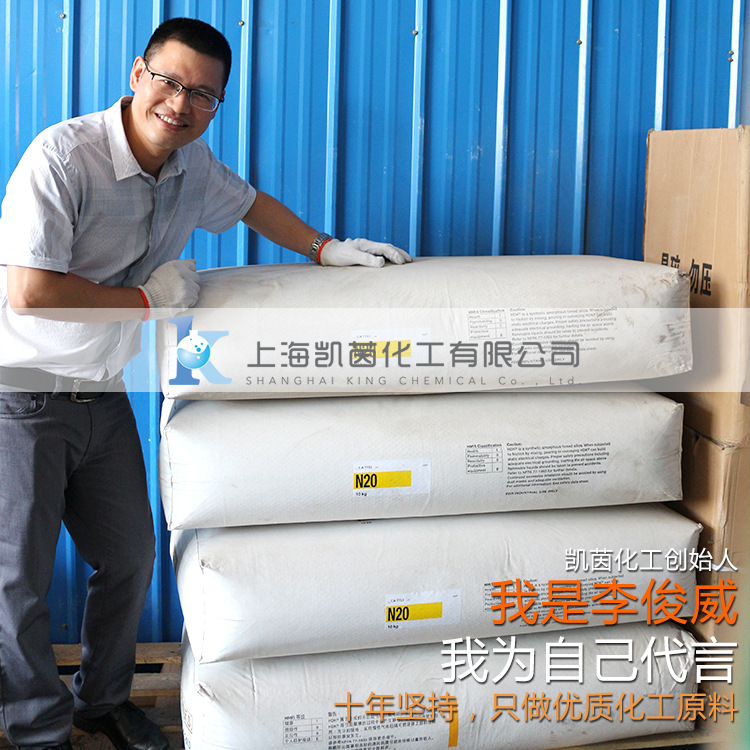

- 水性油墨中,加入蜡乳液与
- 农药原料中常用的三氯乙酸
- 分散剂在涂料中的八大作用
- 二氯乙酸是怎么制成的?二
- 水性涂料选择分散剂该注意
- 一篇文章让你读懂什么是氯
- 抗静电剂在涂料工业中的应
- 什么是过乙酸?过乙酸的用
- 知道增稠剂与流平剂之间的
- 一文了解乙酸酐在不同行业
- ”硬脂酸、PE蜡和石蜡“在
- 一文读懂冰乙酸!冰乙酸的
- 膨润土改性及其在环境治理
- 橡塑行业常用的溶剂,乙酸
- 工业防锈水性防锈剂研究与
- 甲酸在印染工业中的应用,
- 乳化剂np10的性能与应用
- 钨酸的作用?钨酸的性质及
- 一文读懂消光粉的三大用途
- 皮肤碰到氟硅酸了怎么办?
- 关于硅酸你了解多少?硅酸
- 神奇!氯磺酸的作用范围竟
- 胶粘剂行业竞争激烈,水性
- 高氯酸你了解多少?高氯酸
- 偶联剂和交联剂、相容剂在
- 氢溴酸的性能及用途介绍
- 无水氢氟酸有什么作用?无
- 氢氟酸你了解多少?氢氟酸
- 消泡剂在混凝土中的应用
- 水溶性消泡剂与油性消泡剂
北京地区腈纶短纤价格稳定
2017年上半年,我国甲醇产量约2220万吨,较去年同期增长约110万吨,增幅5.1%;进口约390万吨,较去年同期减少约35万吨,降幅8%;表观消费量约2600万吨,较去年同期增长约62万吨,增幅2.4%。国产增多,进口减少环氧固化剂,直接消耗和厂对厂贸易增加,二次贸易市场逐步萎缩,这是上半年甲醇市场的特点。
上半年进口放缓
2017年上半年,我国进口甲醇较去年同期减少约35万吨,出口较去年同期增长约9万吨。去年10月以来,国内大宗商品市场普遍大幅上涨,创出3年来高位,促使我国去年全年进口甲醇超过800万吨,仅上半年就进口425万吨。今年以来,相对较高的甲醇价格严重刺激国内甲醇企业高负荷生产,部分常年未开的装置重启,上半年我国甲醇总产量较去年同期增长约5%。
国内的高产量在一定程度上抑制了国际甲醇对我国的出口,而且,上半年我国对外出口(转口)甲醇约10万吨,较去年同期增长5倍,相对抑制了国际甲醇高昂的价格。对于港口市场而言,进口减少、转口增多,并没有造成无货可用的局面,相反,国内港口地区库存持续维持相对高位,国产货与进口货在港口市场甚至进行了两轮价格博弈,并占据了一部分港口市场。
传统下游需求萎缩

表为上半年甲醇传统下游需求
从数据上来看,2017年上半年,甲醇传统下游整体呈现萎缩状态,尤其环保、安监等造成甲醛对甲醇需求量大减。此外,因原油价格下滑,液化气价格持续走低,二甲醚需求相应减少,从而减少了二甲醚对甲醇的用量。就实际需求来看,上半年传统下游需求占比继续下滑,而甲醇制烯烃占比已超过50%。
贸易方式逐渐改变
产量增多,表观消费量增长,但传统下游需求却在下滑,这表明我国甲醇二次贸易市场继续萎缩。2016年,我国3900万吨的产量及4700万吨的表观消费量,其中约2100万吨没有经过贸易直接进入下游,占比约44.68%,而今年上半年,这一比例已上升至46.15%左右。其中,甲醇制烯烃厂自有甲醇占了绝大部分比例,而部分甲醛、醋酸、二甲醚、甲烷氯化物等厂同样自有甲醇装置,严格来讲,这部分甲醇只是中间体,并没有作为正式的商品出现在市场上。
除去这一部分,甲醇厂直接对下游的厂对厂式贸易也在增加,而沿海盛虹、富德、兴兴等烯烃厂又占据了大量的进口货物,这样,留给贸易商进行二次贸易的货物更少。上半年在全国范围内开展了长期的环保、安全生产治理,对于甲醇传统零散下游造成了不小的冲击,部分小企业被迫关停甚至拆除,整体上影响了甲醇传统下游的需求。而江苏盛虹、常州富德甲醇制烯烃装置的开启,再度提高了甲醇制烯烃在甲醇下游中的占比。
长远来看,我国甲醇传统下游经过常年的运作,市场已基本接近饱和,并无再度扩张的空间,甲醇制烯烃厂因用量较大,多数采取自备或长约上游的方式。近年来,随着环保、安监的升级,部分零散甲醇下游正逐步被淘汰,这部分需求将呈持续减少的态势,对于我国甲醇二次贸易市场而言,粗放的经营方式已是过去式,未来经二次贸易环节进入市场的甲醇,将逐步继续减少。
China's methanol secondary trade market is gradually shrinking
China's methanol production in the first half of 2017 was approximately 22.2 million tons, an increase of 1.1 million tons or 5.1% over the same period of last year. The import volume was approximately 3.9 million tons, a decrease of approximately 350,000 tons or 8% as compared with the same period of last year. Apparent Consumption of about 26 million tons, an increase of about 620,000 tons over the same period last year, an increase of 2.4%. Increased domestic production, reduced imports, direct consumption and factory-to-factory trade, the secondary trade market is gradually shrinking, which is the first half of the methanol market characteristics. In the first half of 2017, China's import of methanol dropped by about 350,000 tons over the same period of last year and its export volume increased by about 90,000 tons over the same period of last year. Since October last year, the domestic commodity markets have generally risen sharply, reaching a three-year high, prompting China to import more than 8 million tons of methanol last year and only 4.25 million tons in the first half of the year. Since the beginning of this year, the relatively high price of methanol has seriously stimulated the heavy-load production of methanol enterprises in China. Some of the perennial plants have not restarted. In the first half of this year, China's total methanol output increased by about 5% over the same period of last year. In the first half of this year, China's foreign exports (re-exports) of methanol amounted to about 100,000 tons, an increase of 5 times over the same period of last year, which has restrained the growth of international Methanol high price. For the port market, the decrease of imports and the increase of re-exports did not result in the availability of goods out of stock. On the contrary, the inventory of domestic ports continued to maintain a relatively high level. Domestic and imported goods even had two rounds of price games in the port market, occupying A part of the port market.
Traditional Downstream Demand Shrinkage
The table shows the demand for traditional downstream methanol in the first half year
From the data point of view, in the first half of 2017, methanol The traditional downstream showed overall shrinkage, especially for environmental protection, safety supervision and other causes of formaldehyde on the demand for methanol greatly reduced. In addition, due to the decline in crude oil prices, liquefied gas prices continued to decline, a corresponding decrease in demand for dimethyl ether, thereby reducing the amount of dimethyl ether on methanol. In terms of actual demand, the share of traditional downstream demand continued to decline in the first half of the year, while methanol-to-olefins accounted for more than 50%.
Gradual changes in the mode of trade
The increase in output and apparent consumption growth, but the traditional downstream demand is declining, indicating that China's methanol secondary trade market continues to shrink. In 2016, the output of 39 million tons and the apparent consumption of 47 million tons in China, of which about 21 million tons went directly downstream without trade, accounting for about 44.68%. In the first half of this year, this proportion had risen to 46.15% about. Among them, methanol to olefins plant own methanol accounted for the vast majority of the proportion, and some formaldehyde, acetic acid, dimethyl ether, methane chloride and other plants also have their own methanol plant, strictly speaking, this part of the methanol is only an intermediate and not Appears on the market as a formal product.
Removed this part, the methanol factory directly to the downstream plant on the factory-type trade is also increasing, while the coastal Shenghong, Fude, Xing Hing and other olefin plants and took up a large number of imported goods, so leave Traders trade for less goods. In the first half of the year, a long-term environmental protection and safe production management were carried out across the country. This caused a considerable impact on the scattered traditional downstream of methanol. Some small enterprises were forced to shut down or even dismantle. As a whole, they affected the demand of traditional methanol downstream. However, the opening of the methanol-to-olefin plant in Jiangsu Shenghong and Changzhou Fude once again increased the proportion of methanol-to-olefins in methanol downstream.
In the long run, the traditional methanol downstream of our country undergoes perennial operation and the market is basically close to saturation. There is no room for further expansion. Due to the large consumption of methanol-to-olefins plants, most of the methanol-to- the way. In recent years, with the upgrading of environmental protection and safety supervision, part of the scattered downstream methanol is gradually being eliminated. This part of demand will continue to decrease. For the secondary market of methanol in China, extensive management mode is past tense, Methanol entering the market through secondary trade in the future will gradually continue to decrease.

【版权声明】秉承互联网开放、包容的精神,凯茵化工欢迎各方(自)媒体、机构转载、引用我们原创内容,但要注明来源凯茵化工;同时,我们倡导尊重与保护知识产权,如发现本站文章存在版权问题,请将版权疑问、授权证明、版权证明、联系方式等,发邮件至 app@shkingchem.com,我们将第一时间核实、处理,感谢您的配合。
相关产品
【版权声明】秉承互联网开放、包容的精神,凯茵化工欢迎各方(自)媒体、机构转载、引用我们原创内容,但要注明来源凯茵化工;同时,我们倡导尊重与保护知识产权,如发现本站文章存在版权问题,请将版权疑问、授权证明、版权证明、联系方式等,发邮件至 app@shkingchem.com,我们将第一时间核实、处理,感谢您的配合。










